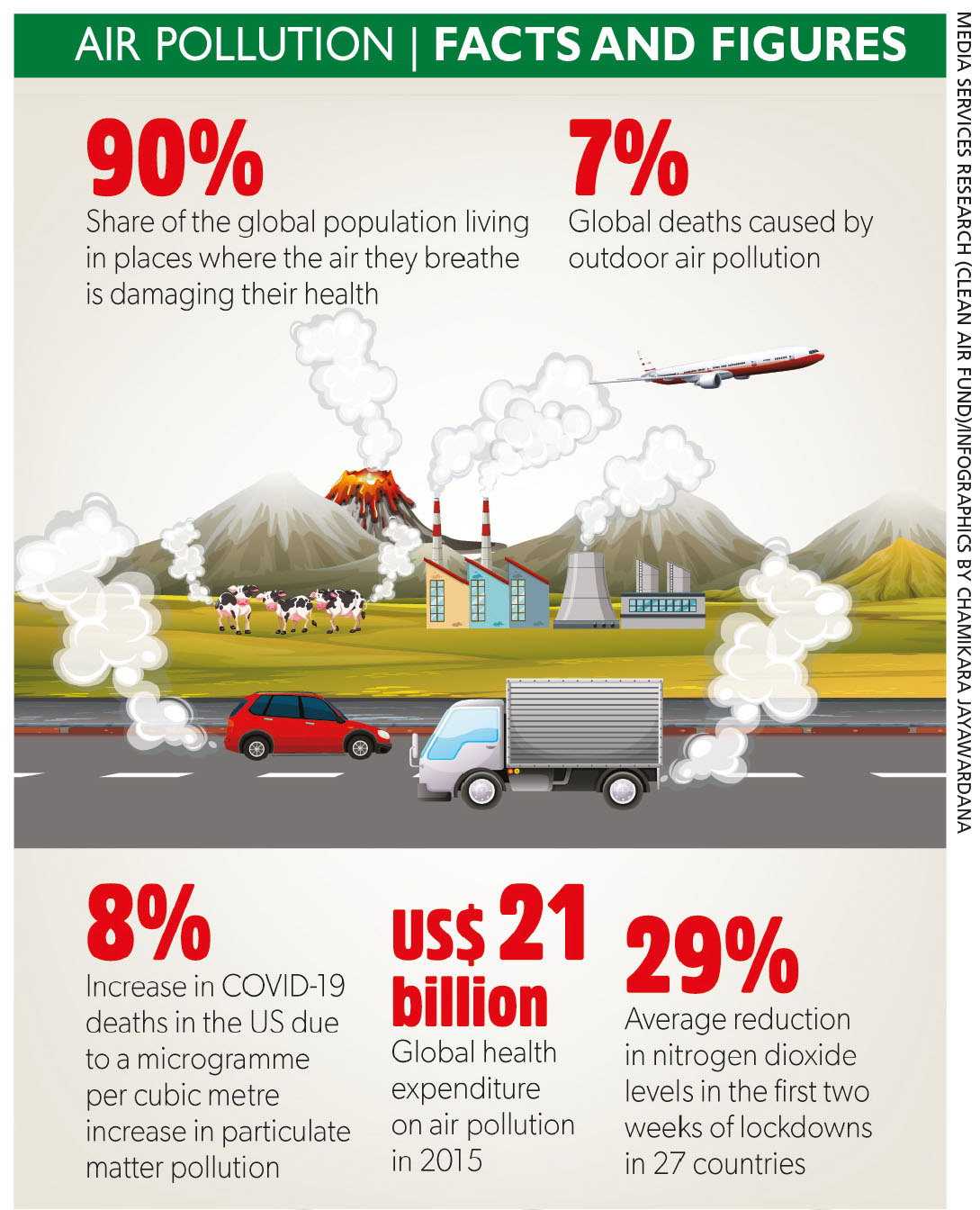SUSTAINABLE CITIES
PROTECTING URBAN LIFESTYLES
Safeguarding city centres against multiple risks – Kiran Dhanapala
Cities form the building blocks of a sustainable economy and society, and need multi-disciplinary planning and consultations before investment. Indeed, air pollution is a major urban priority.
A post-COVID Clean Air Fund survey reveals that at least two-thirds of respondents support stricter laws to tackle air pollution. Stimulus packages and bailouts offer unique opportunities to incentivise fossil fuel reduction, renewable energy, clean technologies and green jobs.
And some are already repurposing city centres to use cleaner energy and technology.
The importance of safeguarding cities against increasing risks has been highlighted by COVID-19. Such zoonotic diseases are more likely to be transmitted from animal to human populations given the diminishing biodiversity buffer between the two.
And the urban sprawl on the edges of cities has been found to be more at risk of infectious disease outbreaks given infrastructure and governance issues.
World Bank research into COVID-19 hotspots has identified high-risk areas in Mumbai, Kinshasa and Cairo that point to overcrowding, and stretched public facilities with a lack of domestic water and sanitation.
This means addressing issues of people not moving, providing short-term emergency attention and longer term slum upgrades for disease resilience in the future. Urban slum dwellers are often ignored but this crisis has highlighted their vital role in disease incidence and control.
Nature based solutions especially in the face of climate change are vital. Investments in green infrastructure include trees, parks, open spaces, green roofs on land, and living shorelines of marshes and wetlands along coastal areas.
If implemented properly, they offer several advantages including being cheaper than traditional infrastructure projects; city departments collaborating on multiple goals; addressing various city dwellers’ needs and multiple shocks with one intervention; biodiversity benefits; greater chances of innovative solutions; channelling resources and solutions to underserved communities; and jobs for the community.
Singapore’s Bishan-Ang Mo Kio Park is an example of multi-agency collaboration creating an integrated multi-benefit green infrastructure project. Previously, a concrete channel was constructed for the Kallang River to control stormwater and flooding. Rather than repairing it, the river was naturalised, restoring the riverbed to its natural floodplain.
The ‘blue-green infrastructure’ project offered flood protection, improved water quality and community benefits.
A lack of expertise, data and fundraising means cities often opt for grey infrastructure rather than green alternatives. But this has to change. Urban planning and sustainability must merge in an increasingly urbanising Asia.
We need a new breed of urban planners to create cities based on circularity and sustainability principles. They would work on multi-stakeholder projects to establish a circular road map or initiate circular business projects. This requires tracking relevant metrics, and a dash-board indicating how each city is performing and comparability.





